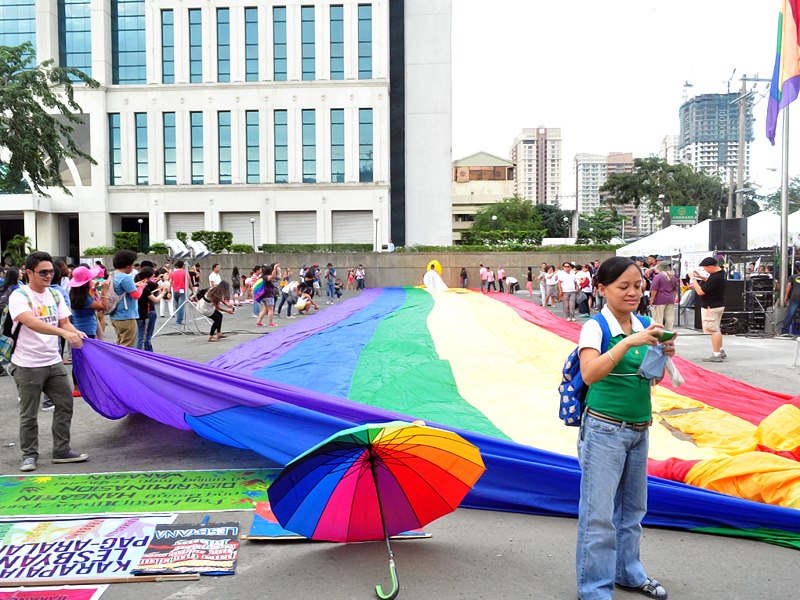(Updated 4 p.m., Dec. 10) - It rained on their parade, but the organizers had a ready one-liner: “There’s always a rainbow after the rain.”
The rainbow, of course, is the symbol of the LGBT community around the world, and a reflection of their diversity, demonstrated once again on the streets of Manila. The gist of the march, the distillation of the rainbow colors into a point of bright white, was succinctly explained by an eight-year-old daughter of a lesbian couple. She said love is all that is important, even in the face of discrimination. “Kahit lait-laitin po ako (ng ibang mga tao), wala akong pakialam basta po ang importante nagmamahalan kami,” she said.
The estimated 1,500 marchers belonged to various LGBT organizations as well as their allies. Much like a rainbow, it was a colorful display of costumes and personalities that spoke of pride for their sexual orientation. And, on a serious note, it was also a serious call to end discrimination.

A 200-meter rainbow flag at the City Hall of Makati, where this year's Metro Manila Pride March was held on December 8. Photo by Alek Weber
'Change starts at the policy level' The gay pride march, which was organized by Task Force Pride (TFP) Philippines, coincided with Human Rights Consciousness Week and National Lesbian Day. The parade carried with it the theme of “Sari-Sali: Pride in Action”. “Ngayon taon ang core message natin is that change starts at the policy level, or it can start at the policy level para maigpawan ang diskriminasyon,” TFP spokesperson Tao Aves said. The policies TFP Philippines is most interested in are the Anti-Discrimination bill and a proposed ordinance in Makati seeking protection from discrimination.
House Bill 1483, or a measure against discrimination on the basis of sexual orientation and gender identity has been pending in Congress since November last year. Meanwhile, a signature petition was launched at the event to call on Makati City to adopt an anti-discrimination ordinance, similar to those in the cities of Quezon and Cebu, Aves said. The organizers of the pride parade wished Makati would adopt a resolution that would discourage acts of discrimination against the LGBT community. The reasons affluent Makati was chosen as the site of the parade was its resources and prominence, and the fact that it currently does not have an anti-discrimination ordinance. Aside from various local government units, the LGBT community was also lobbying the business sector and educational institutions to help end discrimination against members of the community. The Pride March was also an opportunity, given the approaching 2013 elections, to encourage the citizenry to support LGBT representation in the government through supporting allied lawmakers and groups.
'It's a sin' As with past LGBT pride parades, members of Christian groups vehemently opposed to homosexuality were present, bearing placards such as “It’s not OK to be gay! It’s a sin” and “Ang nilikha ng Diyos ay lalaki at babae, hindi bakla at tomboy.” While these people called on those marching to “repent from the sin of homosexuality,” it was wholly an affable encounter as some LGBT members gamely posed with them for some pictures. There were no reported altercations and the parade ended with messages of solidarity and cultural performances. After all, the march was a call for acceptance and love, the latter a common cause for all parties.
— DVM/KG, GMA News 



